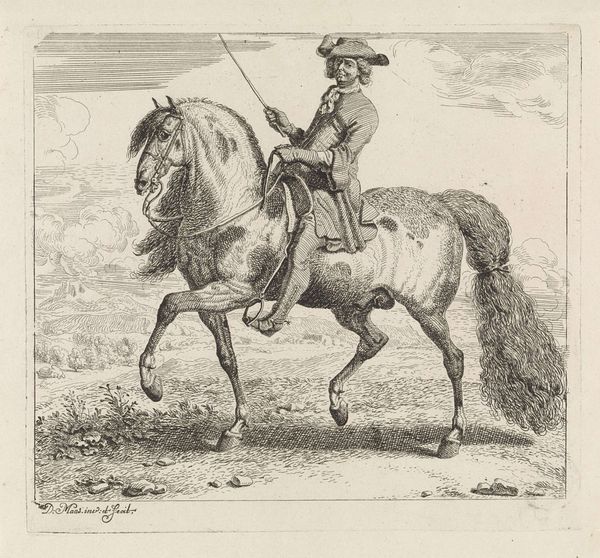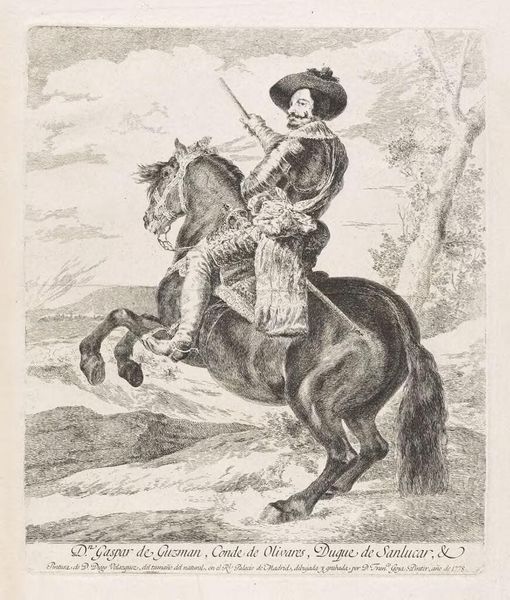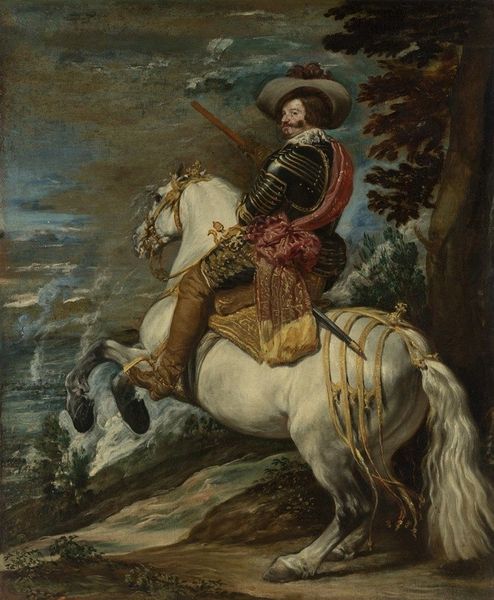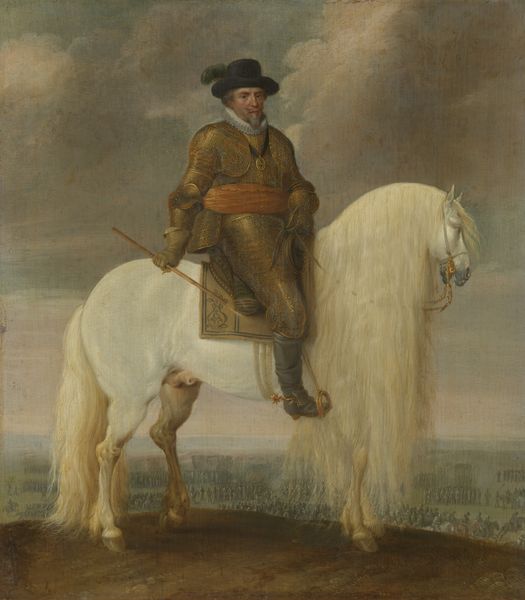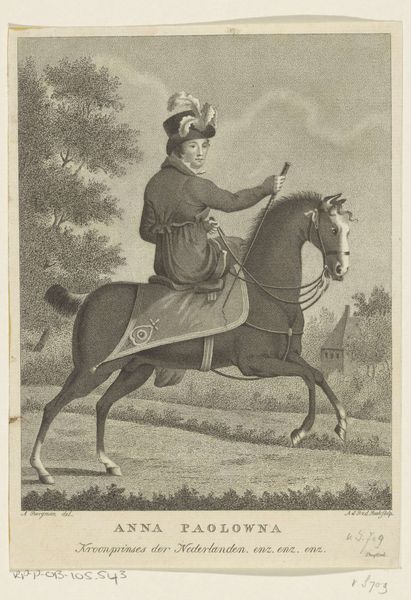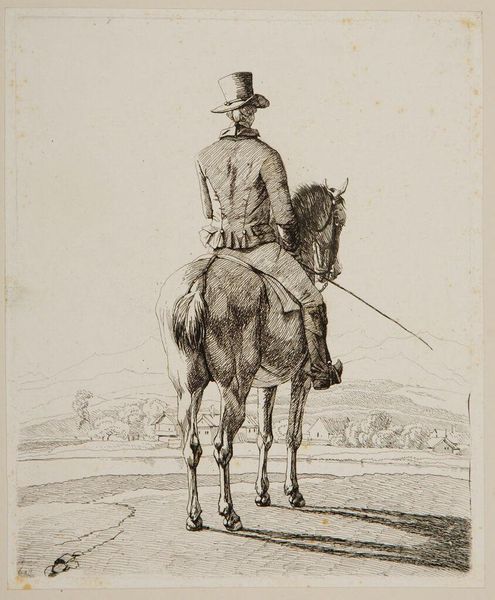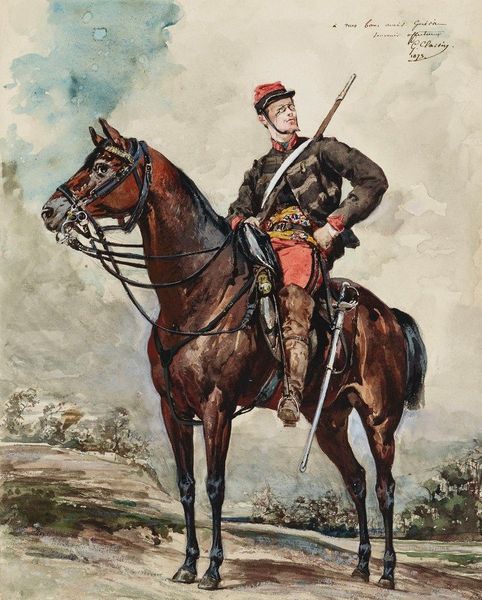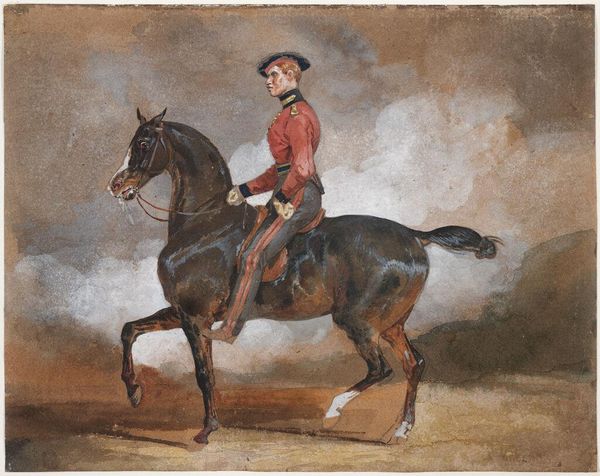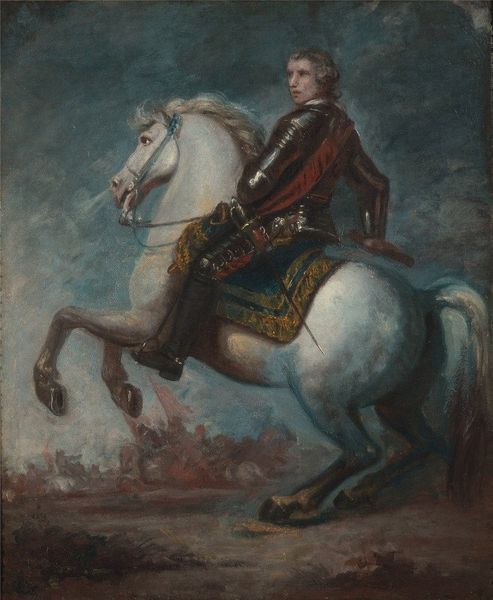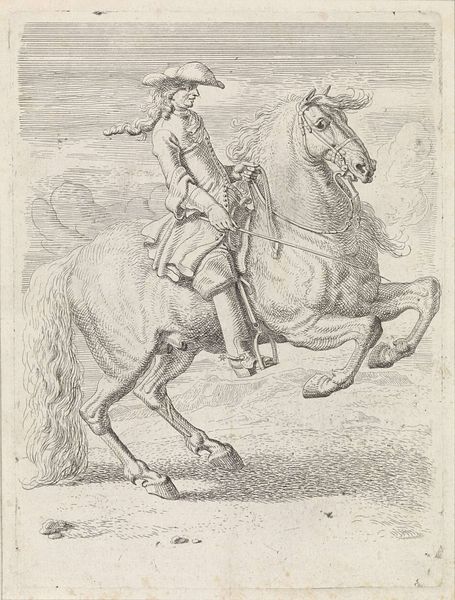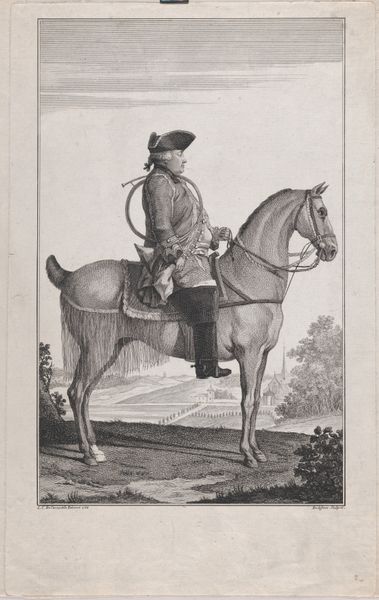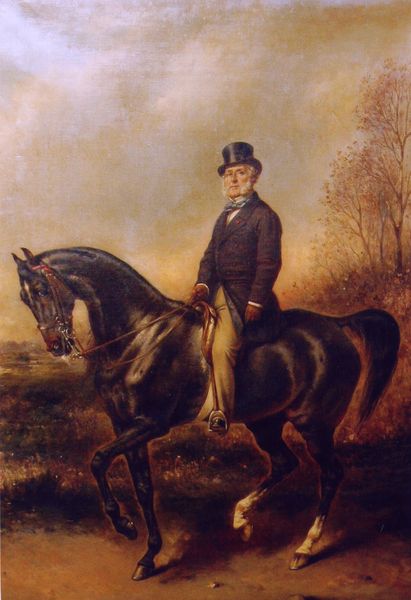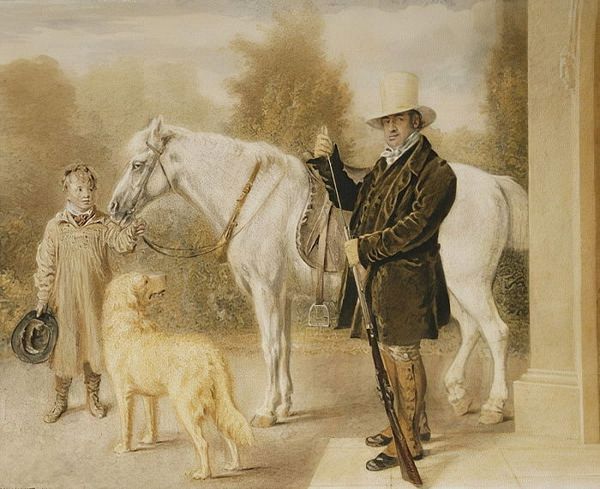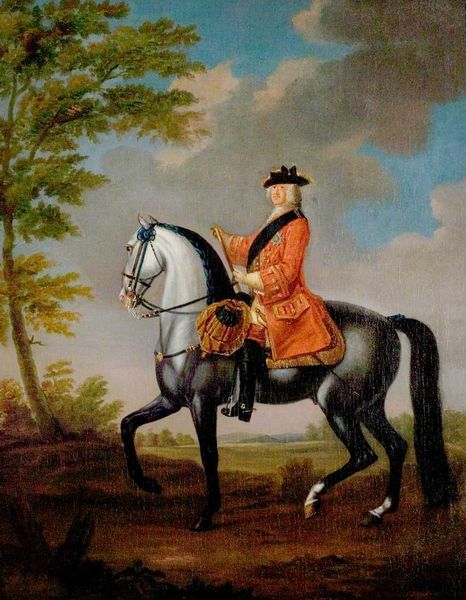
Dimensions: 21.6 x 16.5 cm
Copyright: Public domain
Editor: This is "Monk with barrels on horse," a watercolour by Saverio della Gatta, dating to 1799. I’m immediately struck by the contrast: a humble, almost comical scene rendered with such delicate artistry. What do you see in this piece, beyond the surface level? Curator: Beyond the surface, I see a commentary on power, labor, and social hierarchies subtly woven into what seems like a simple genre scene. The monk, seemingly burdened by the barrels, becomes a symbol of the Church’s wealth and influence, and its reliance on both earthly resources and perhaps the labor of those less privileged. The surrounding landscape is not just a backdrop; it contextualizes the monk's journey, perhaps highlighting the Church's presence within and influence over the rural community. How does the use of watercolour as a medium complicate or reinforce these themes, in your opinion? Editor: That's interesting! I hadn’t thought about the choice of watercolour in relation to the themes. Its translucence and delicacy could suggest a certain fragility of that power or maybe a romanticized view of it? Curator: Exactly! The watercolour technique lends an air of lightness, almost softening the potentially harsh realities of social power dynamics. Consider how the painting could be viewed through a post-colonial lens. The monk, the barrels, the very landscape itself, can all be read as elements within a larger system of resource control and dissemination, not to mention control of spiritual life. Do you think della Gatta was intentionally embedding these complex critiques, or do you see something else at play here? Editor: I can see the layers of interpretation now. It’s fascinating how much social and political commentary can be drawn from such a seemingly simple image. I hadn't considered how medium specificity, like watercolor, can either obscure or reveal additional context to a given artwork. Curator: Indeed. The artwork becomes a mirror, reflecting not just the world depicted, but our own perspectives and historical consciousness. By analyzing visual art, and understanding its historic background, we come to have more informed views of identity, race, and politics.
Comments
No comments
Be the first to comment and join the conversation on the ultimate creative platform.
